273 by172 by 23 meters – with a total area of 55,000 square meters, the TFS truly is a giant. Thus, the dimensions are mirrored by the construction materials used: in total, the building is made of about 7,000 tons of steel – almost as much as in the Eiffel Tower.
To build the vehicle safety center, a triple-digit million amount was invested. During the three-year construction phase, planners and construction workers were confronted with many a challenge.
An example: The longest track run-up at the TFS measures more than 200 meters. In order to obtain data that can be reproduced exactly, the track must be completely level: for the complete track the tolerance is an incredible five millimeters per 100 meters. Furthermore, nothing is allowed to wobble here when the sensors gently make contact with the immaculate sheet metal of the car to create a point-by-point and micrometer-precise, digital 3D image of the flawless vehicle body. Therefore, around 500 concrete pillars below the ground plate descend as far as 18 meters deep into the ground.
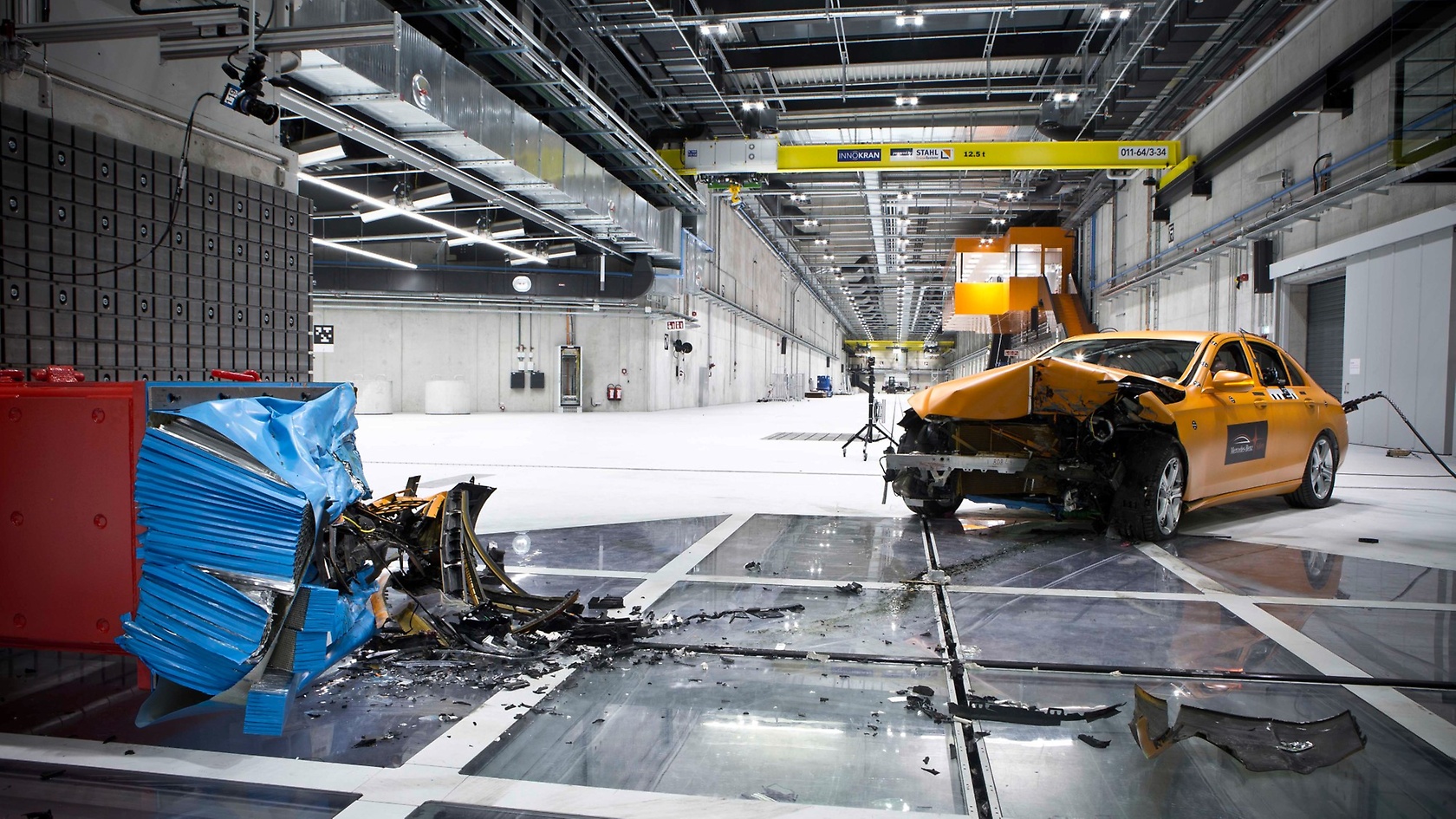,xPosition=0,yPosition=0.5)



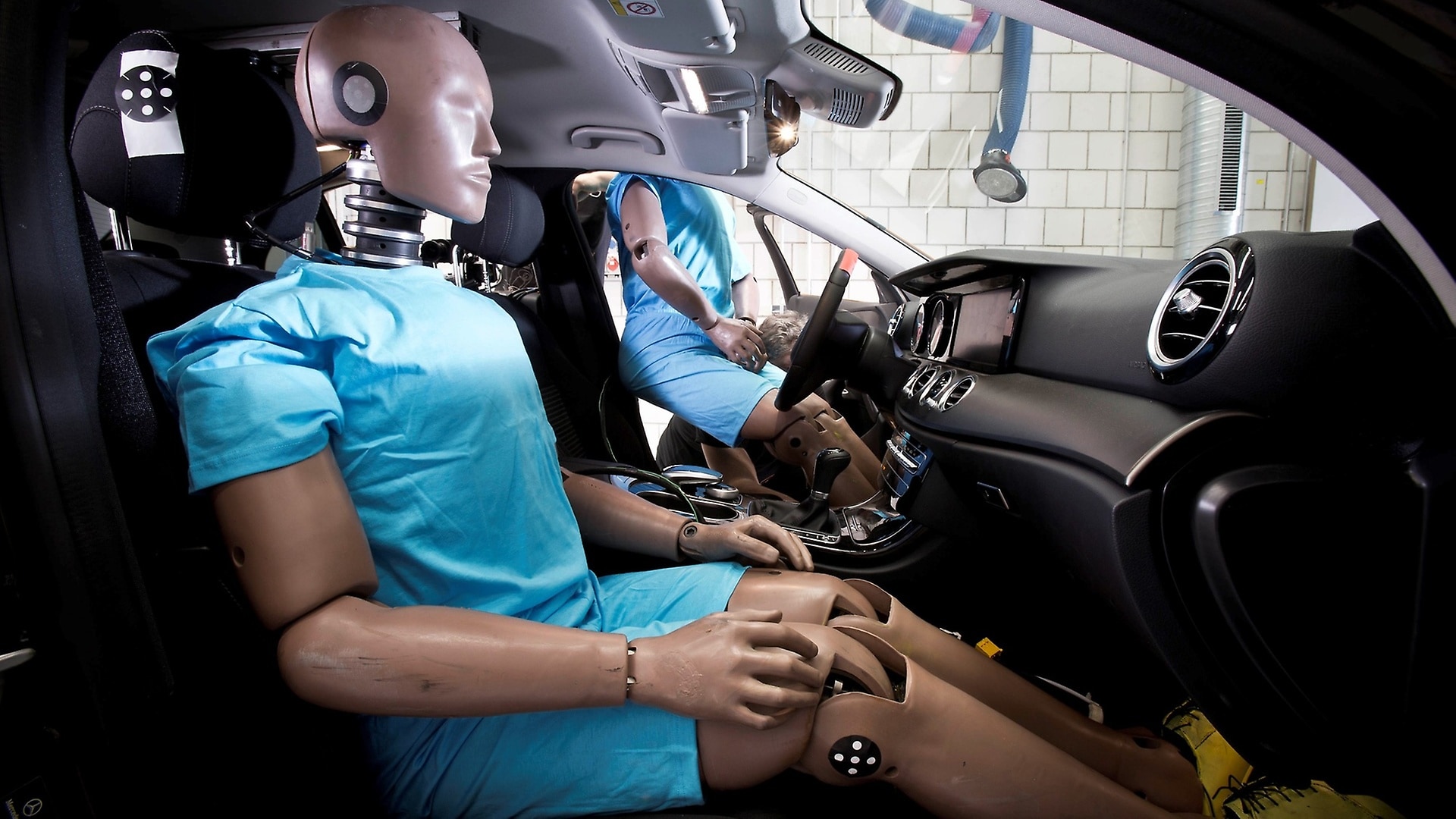
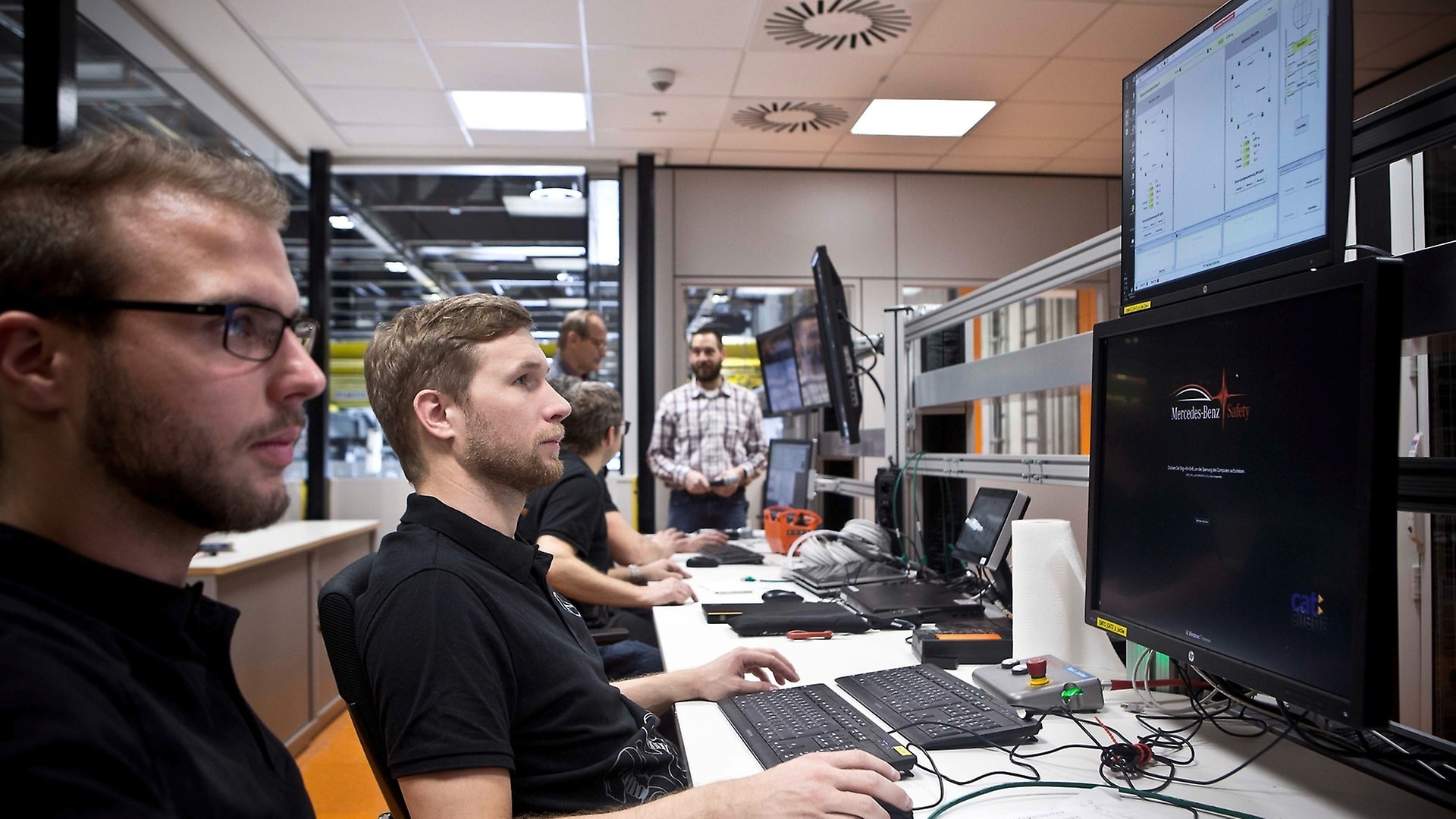
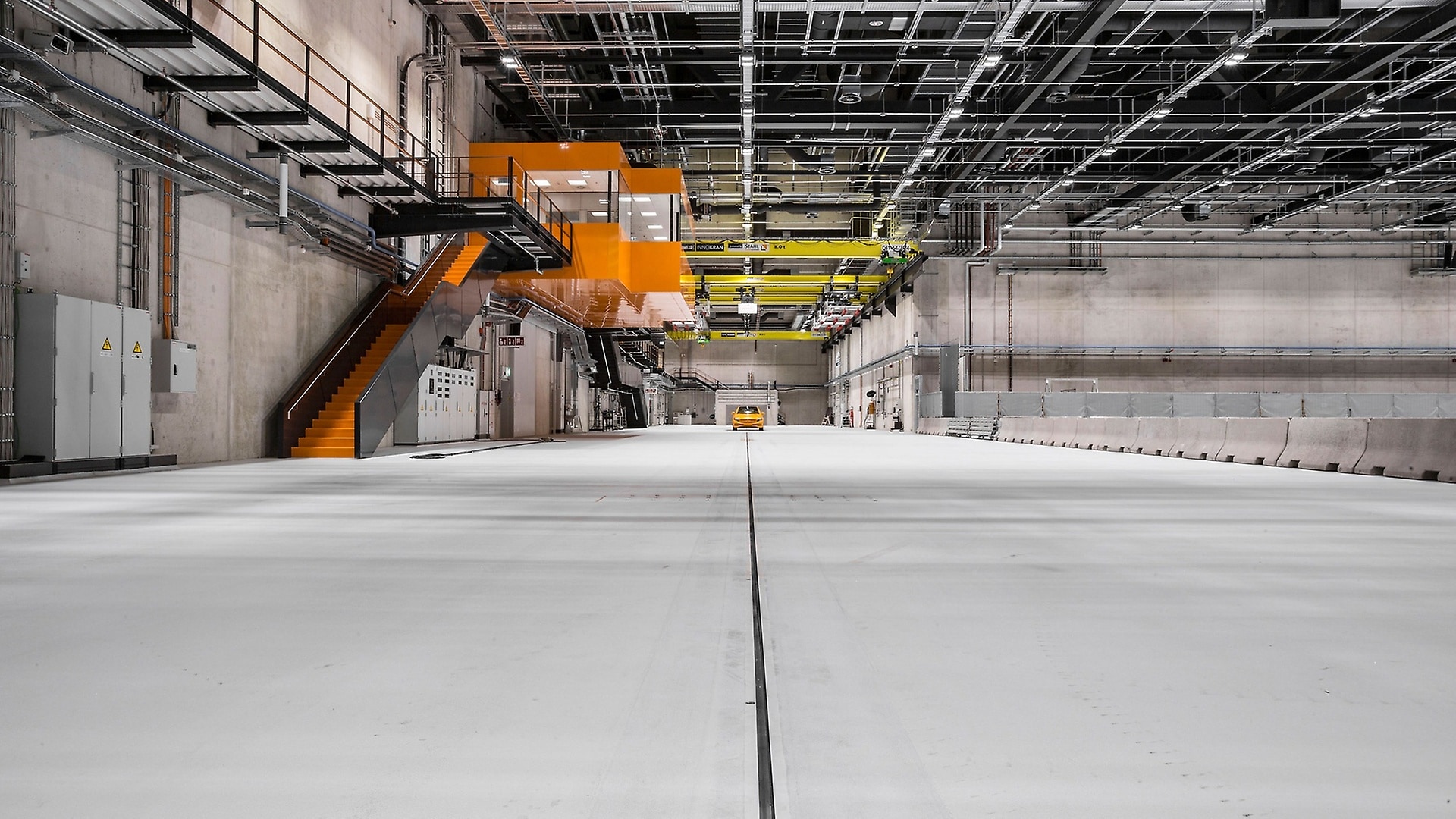
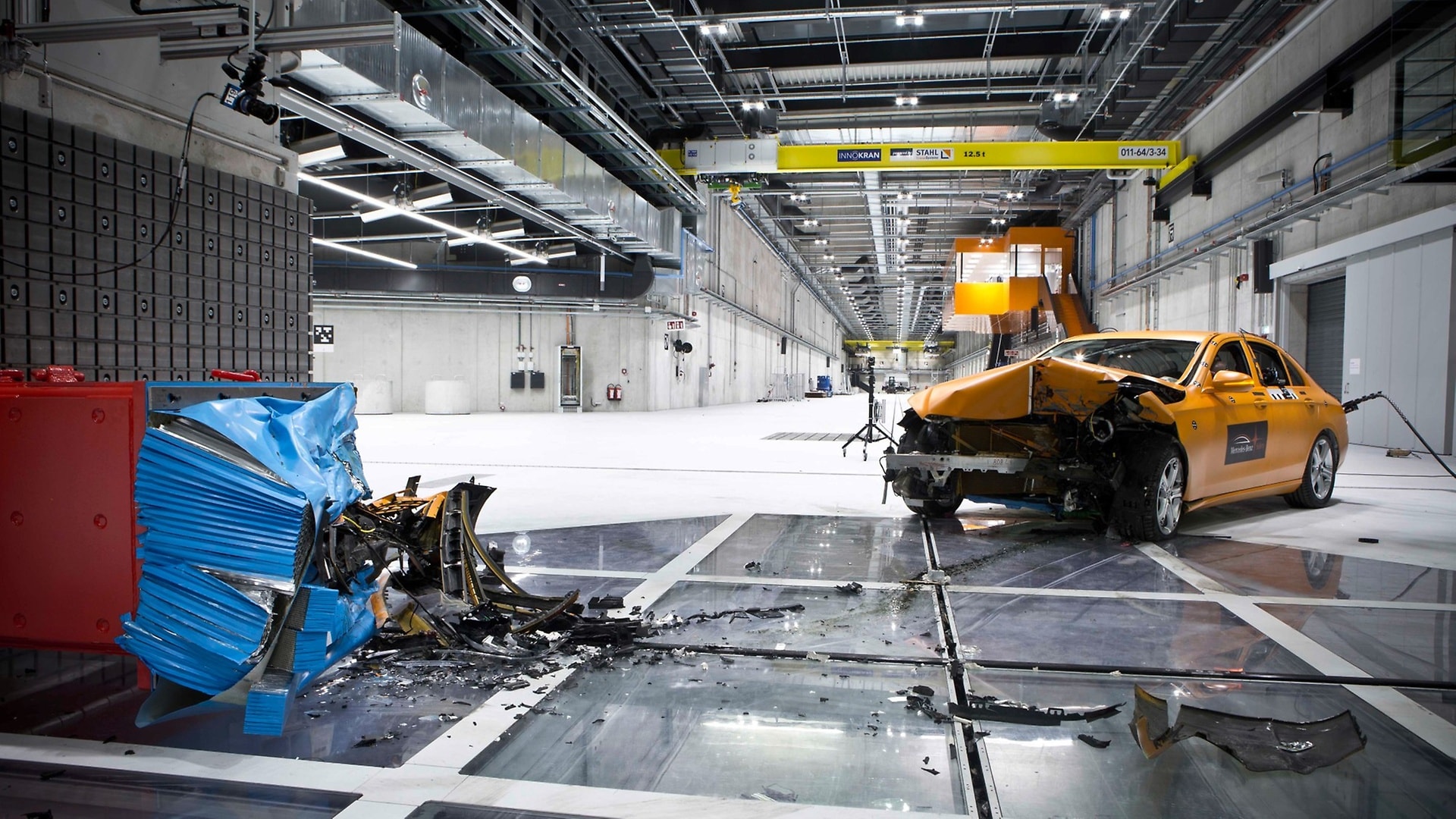
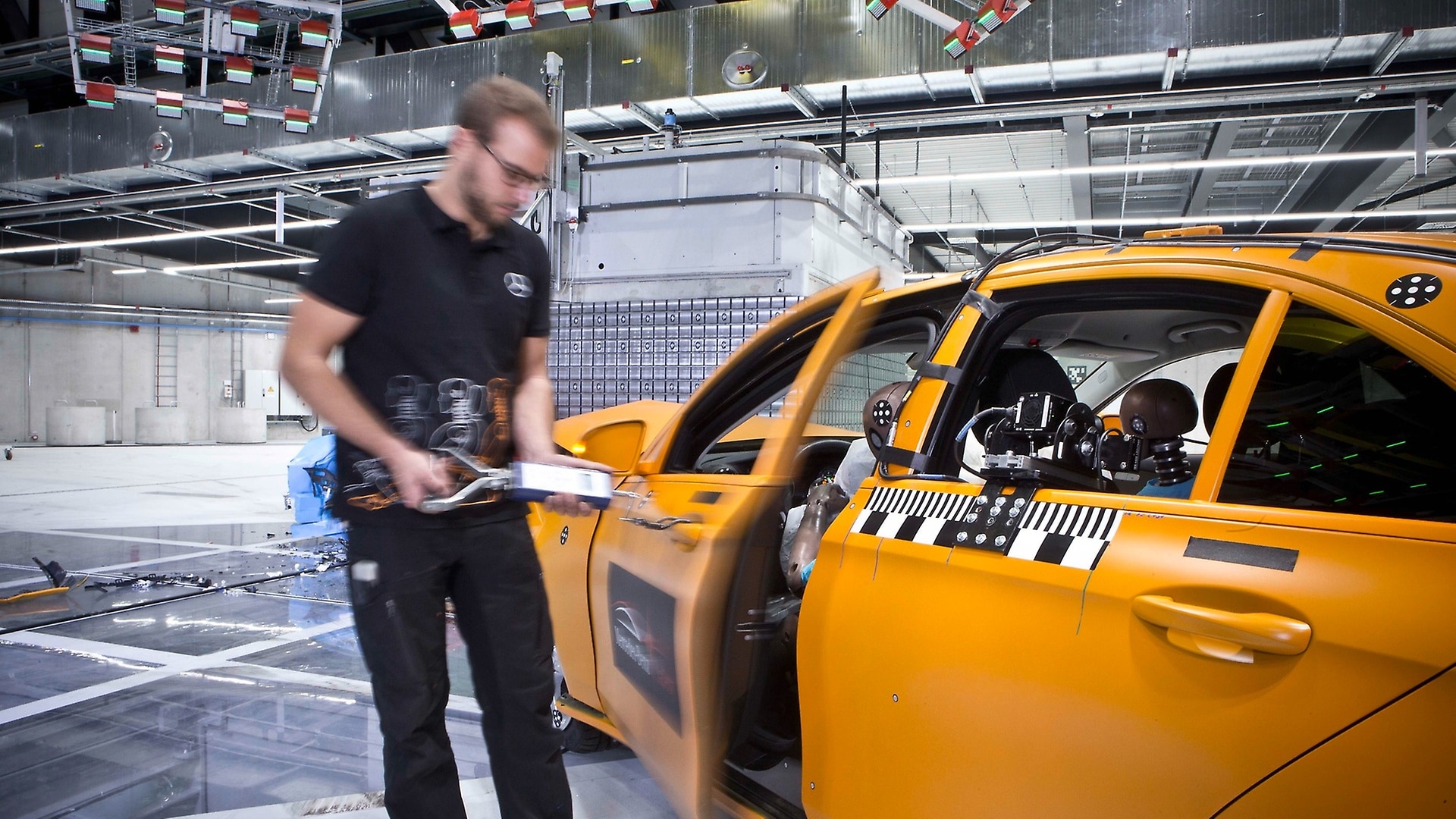
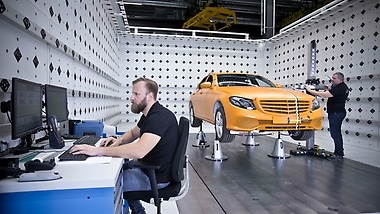
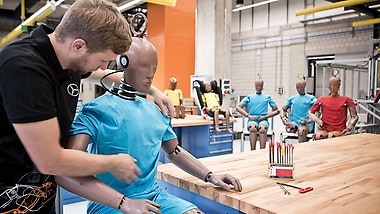

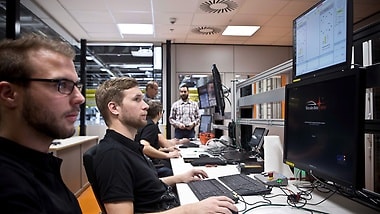
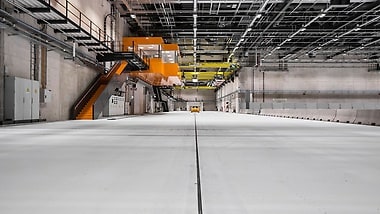

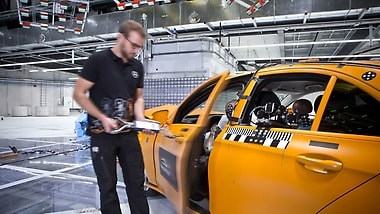
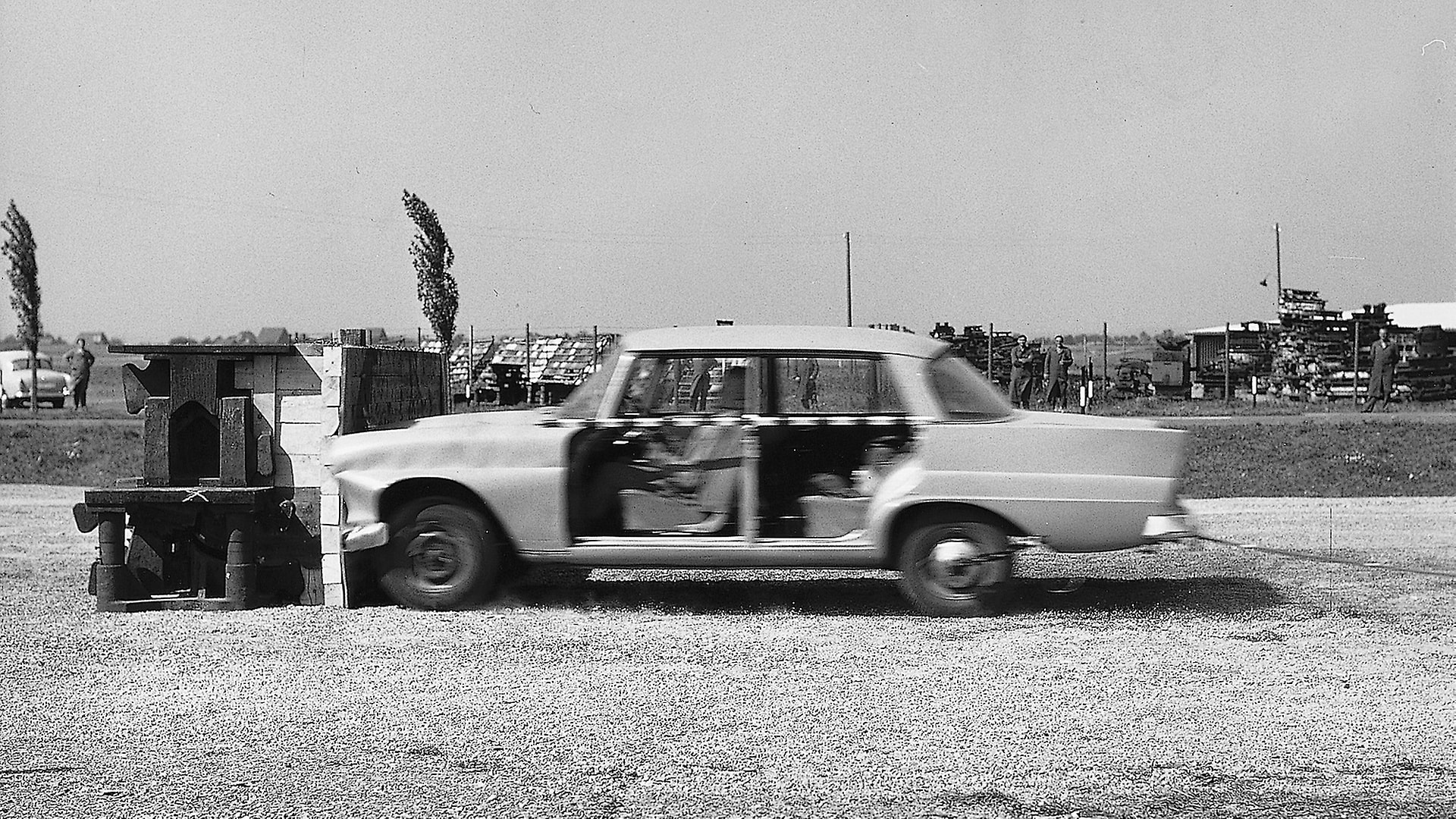
,xPosition=0.5,yPosition=0)
,xPosition=0.5,yPosition=0)
,xPosition=0.5,yPosition=0)